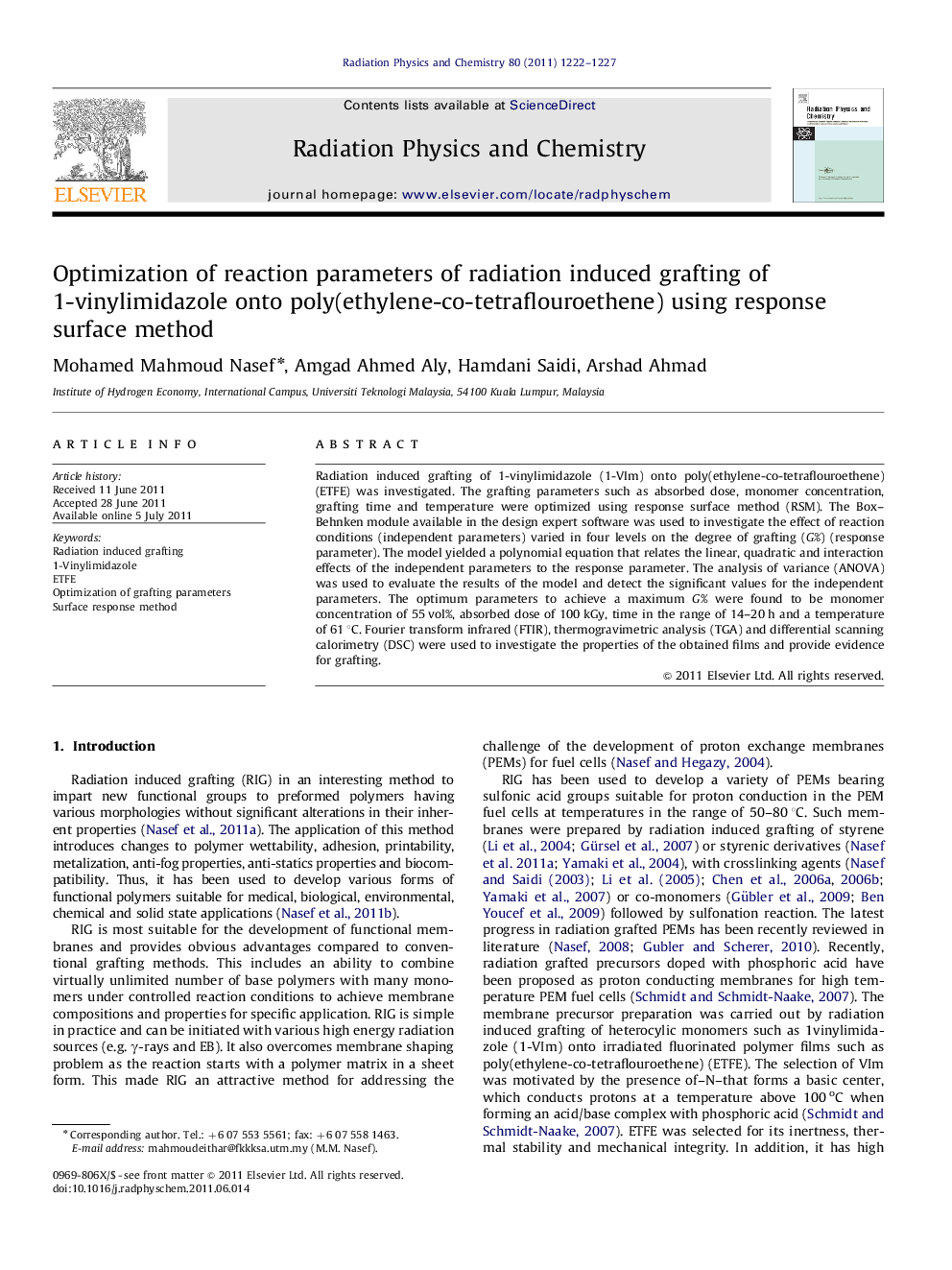| Article ID | Journal | Published Year | Pages | File Type |
|---|---|---|---|---|
| 1891585 | Radiation Physics and Chemistry | 2011 | 6 Pages |
Radiation induced grafting of 1-vinylimidazole (1-VIm) onto poly(ethylene-co-tetraflouroethene) (ETFE) was investigated. The grafting parameters such as absorbed dose, monomer concentration, grafting time and temperature were optimized using response surface method (RSM). The Box–Behnken module available in the design expert software was used to investigate the effect of reaction conditions (independent parameters) varied in four levels on the degree of grafting (G%) (response parameter). The model yielded a polynomial equation that relates the linear, quadratic and interaction effects of the independent parameters to the response parameter. The analysis of variance (ANOVA) was used to evaluate the results of the model and detect the significant values for the independent parameters. The optimum parameters to achieve a maximum G% were found to be monomer concentration of 55 vol%, absorbed dose of 100 kGy, time in the range of 14–20 h and a temperature of 61 °C. Fourier transform infrared (FTIR), thermogravimetric analysis (TGA) and differential scanning calorimetry (DSC) were used to investigate the properties of the obtained films and provide evidence for grafting.
► A precursor for phosphoric acid membrane for a high temperature PEM fuel cell was prepared. ► The grafting parameters for radiation induced grafting of 1-VIm onto ETFE film were optimized. ► Surface response method was used to predict the degree of grafting. ► The predicted value agreed well with the experimental data as indicated by a 3% deviation. ► The number of the experiments and cost of radiation induced grafting were reduced.
